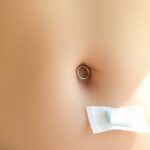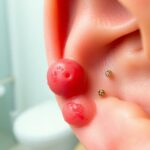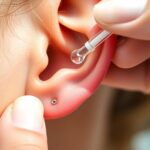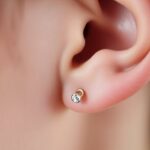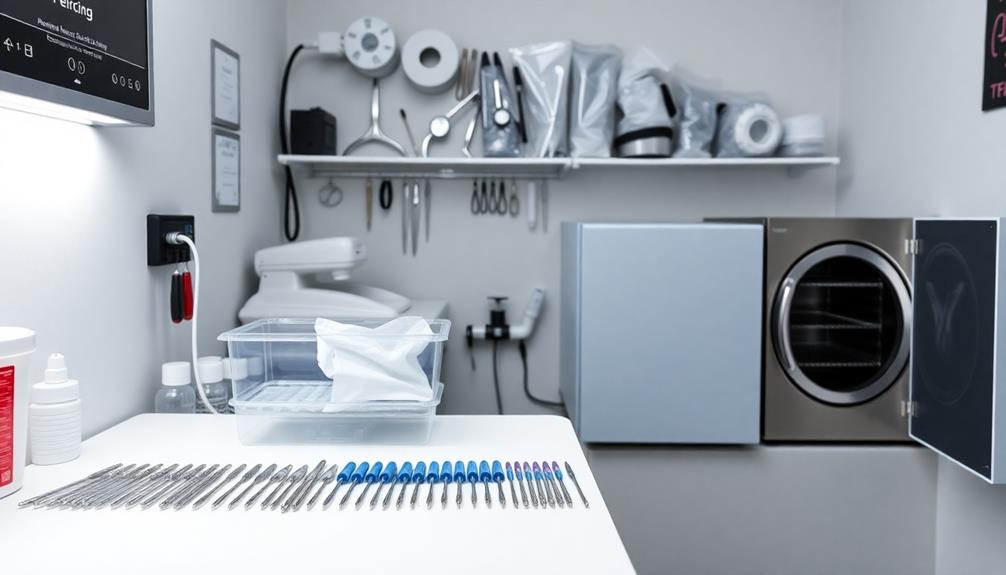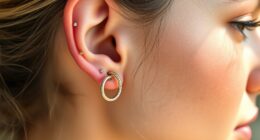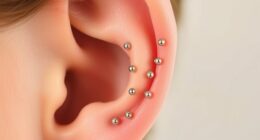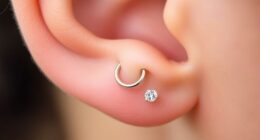If you have sensitive skin or allergies, proper aftercare is essential for your piercing's health. Clean the area twice daily with a saline solution or mild soap, avoiding touching it with dirty hands. Use hypoallergenic jewelry, like surgical stainless steel or titanium, to minimize allergic reactions. Keep the piercing dry and steer clear of pools or hot tubs during the healing process. Watch for signs of irritation—redness, swelling, or itching—and consult a healthcare provider if symptoms persist. Understanding these factors can greatly aid your recovery, and there's more important info ahead to enhance your aftercare routine.
Key Takeaways
- Clean the piercing site twice daily with saline solution or mild soap to prevent infection and irritation.
- Use hypoallergenic jewelry made of surgical stainless steel or titanium to minimize allergic reactions.
- Avoid touching the piercing with unwashed hands to prevent introducing bacteria.
- Monitor for early signs of irritation and consult a healthcare provider if symptoms persist or worsen.
- Keep the piercing dry and avoid submerging it in pools or hot tubs during the healing process.
Understanding Allergic Reactions
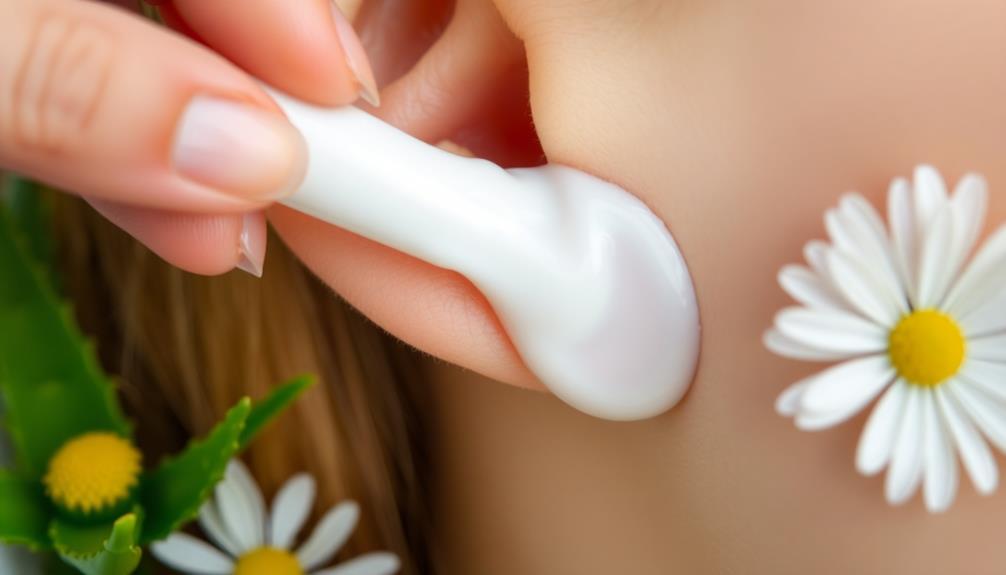
Allergic reactions to body piercings can be a frustrating experience, especially if you're prone to sensitivities. Understanding allergic reactions is key to managing your piercing experience.
Common allergens, such as nickel, cobalt, and chromium, often lurk in body jewelry and can trigger an immune response, leading to allergic contact dermatitis. You might notice symptoms like redness, swelling, and itching around the piercing site within 24 to 48 hours after exposure, but keep in mind that delayed reactions may pop up up to two weeks later.
If you have metal allergies or a history of multiple piercings, you're at a higher risk for experiencing these reactions. The symptoms can sometimes extend beyond the piercing site, causing rashes or hives on other areas of your body.
When diagnosing allergic reactions, healthcare providers look into your patient history and conduct a physical examination. They may also recommend patch testing to pinpoint specific metal allergens that could be causing your discomfort.
Identifying Allergy Symptoms
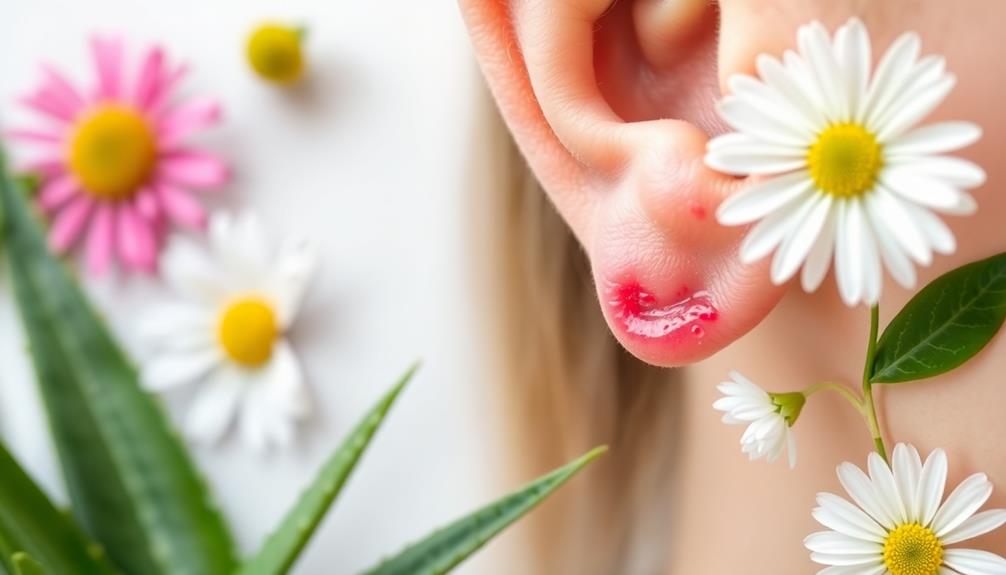
Sensitivity can manifest in various ways after getting a piercing, making it vital to recognize the symptoms of an allergic reaction early on. Common allergic symptoms include redness, swelling, and itching around the pierced area, which can appear within 24 to 48 hours or even up to two weeks post-exposure to allergens. If you're sensitive to metals like nickel, cobalt, or chromium, expect more pronounced reactions, such as blisters and dry patches at contact points with your jewelry.
Here's a quick reference table to help you identify potential allergic symptoms:
| Symptom | Description | Severity Level |
|---|---|---|
| Redness | Skin appears inflamed and irritated | Mild to Moderate |
| Swelling | Puffiness around the piercing | Moderate to Severe |
| Itching | Persistent urge to scratch | Mild to Moderate |
| Discharge/Bleeding | Fluid or blood from the site | Severe |
| Difficulty Breathing | Breathing issues with hives | Immediate Attention |
If you notice systemic symptoms like rashes elsewhere, consult a healthcare provider. Remember, immediate medical attention is imperative if you experience difficulty breathing alongside swelling or hives.
Effective Aftercare Practices
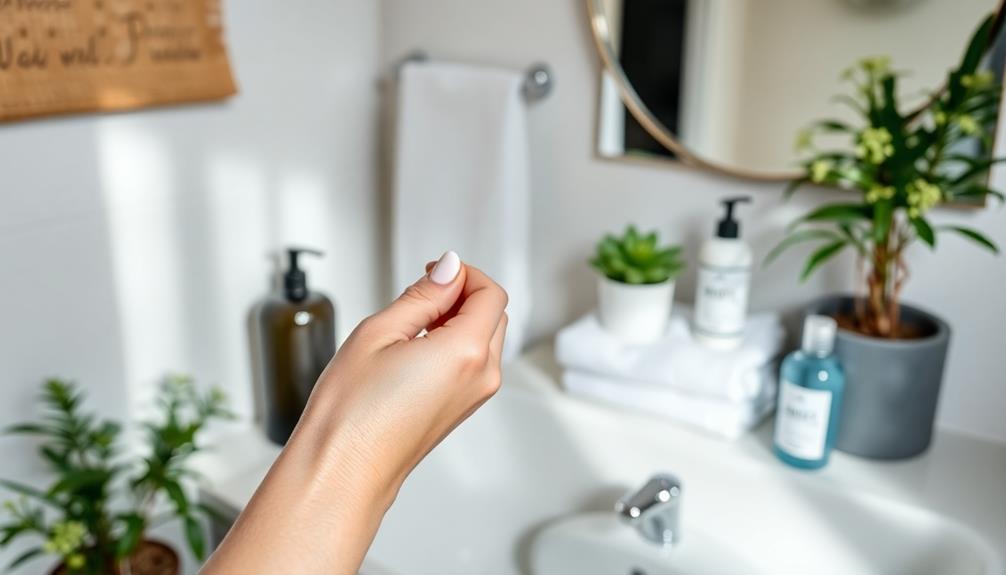
Taking care of your new piercing is essential for a smooth healing process, especially if you have sensitive skin. Implementing effective aftercare practices can help minimize irritation and prevent infections. Here's a quick guide to follow:
- Clean the piercing site twice daily with a saline solution or a mild, fragrance-free soap. Harsh cleaning solutions can worsen sensitivity.
- Avoid touching the piercing with unwashed hands. This helps reduce the risk of introducing bacteria, which can lead to allergic reactions or infections.
- Use hypoallergenic jewelry materials, like surgical stainless steel or titanium, to lower the chances of allergic responses.
Additionally, keep the piercing dry and steer clear of submerging it in pools or hot tubs during the healing process.
Always monitor for early signs of irritation, such as redness or swelling. If these symptoms persist, consult a healthcare provider promptly, as timely intervention can prevent complications.
Choosing Safe Jewelry Materials

When it comes to choosing safe jewelry materials for your new piercing, selecting the right type can make all the difference in your healing experience. For those with sensitive skin or allergies, opting for hypoallergenic materials is essential. Surgical stainless steel and titanium are excellent choices, as they minimize the risk of allergic reactions, especially if you're sensitive to common allergens like nickel, cobalt, and chromium.
Avoid jewelry made from these metals, as they can trigger irritation and allergic contact dermatitis. Choose pieces with a smooth finish and minimal embellishments to further reduce the likelihood of discomfort.
Always consult with a professional piercer who understands your sensitivities, as they can recommend the best jewelry options tailored for your needs.
Make it a habit to regularly check your piercing site for any signs of irritation or allergic reactions. If you notice any adverse effects, don't hesitate to switch to a more suitable material.
When to Seek Medical Help

Knowing when to seek medical help after getting a piercing can be vital for your health. It's important to monitor your body for any signs that indicate a more serious issue. If you experience severe reactions, don't hesitate to consult a healthcare provider.
Here are some key indicators to watch for:
- Severe swelling, hives, or difficulty breathing, signaling an allergic reaction.
- Redness and itching, or persistent pain that doesn't improve, suggesting infection or allergy.
- Blister formation or a rash beyond the piercing site, which may indicate a systemic allergic reaction.
If you notice any signs of infection, like excessive bleeding or pus-like discharge, seek medical help immediately.
Remember, though some discomfort is normal, persistent pain or discomfort requires professional assessment. Keeping your piercing clean is important, but if you've done everything right and still experience these symptoms, don't ignore your body's signals.
Consulting a healthcare professional can help you determine the best course of action and guarantee your health remains a priority. Always trust your instincts—if something feels off, it's better to be safe than sorry.
Frequently Asked Questions
What Helps an Allergic Reaction to Piercings?
If you experience an allergic reaction to piercings, switch to hypoallergenic jewelry, take over-the-counter antihistamines for itching, and clean the area with saline. If symptoms persist, consult a dermatologist for tailored advice and treatment.
Can Allergies Affect Piercings?
Allergies can be like unexpected storms, disrupting your peace. Yes, they can affect piercings, causing irritation or rashes. Choosing the right materials helps minimize reactions, so you can enjoy your new adornment worry-free.
What Is the Best Piercing for Allergies?
When considering piercings, opt for those using hypoallergenic materials. Ear and cartilage piercings typically work well for you, especially with nickel-free jewelry. Always consult a professional to guarantee the materials won't trigger allergies.
What Piercings Are Allergy Friendly?
When considering piercings, opt for materials like titanium, surgical stainless steel, or 14k gold. They're less likely to trigger allergies, ensuring a more comfortable experience. Always consult your piercer to choose the right jewelry.
Conclusion
In conclusion, taking proper aftercare steps is essential for anyone with sensitive skin or allergies. For example, Sarah, a new ear piercee, developed a rash after using nickel jewelry. By switching to hypoallergenic titanium and following a gentle cleaning routine, she healed without complications. Remember, understanding your skin's needs and choosing the right materials can make all the difference. If you notice severe reactions, don't hesitate to consult a healthcare professional for guidance.



